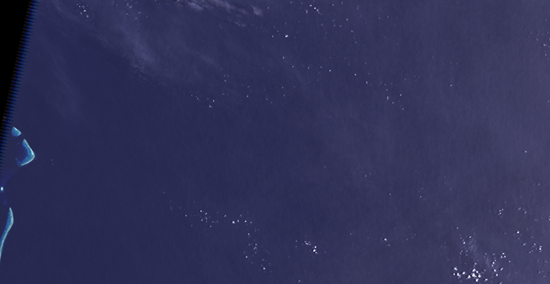
Phantom Islands: Mystical Lands & Cartographic Confusion
By Debra Kelly, Urban Ghosts Media, 1 July 2015.
By Debra Kelly, Urban Ghosts Media, 1 July 2015.
For a long time, cartography was something of an inexact science, which made for a wealth of phantom islands and seemingly-mystical lands, several of which persisted until surprisingly recently. Map-making often relied on word of mouth, based on unreliable second-hand accounts from sailors who reported something off in the distance. Other spurious locations stemmed from folk tales of neighbouring cultures on land-masses just over the horizon. So it’s perhaps little surprise that when explorers set sail to document these undiscovered lands, they found nothing but empty seas. This article documents a series of so-called phantom islands, intriguing cartographic oddities that baffled explorers and caused no end of headaches for map-makers throughout history.
1. Bermeja, Gulf of Mexico
Image: Tanner, Henry S.
Around the time of the 16th century, an island began appearing on maps of the Gulf of Mexico. Bermeja Island, sometimes labelled Vermeja, was widely accepted to have no inhabitants, and it was always drawn off the northwest coast of the Yucatan Peninsula. That was until 1921, when it stopped showing up on maps altogether.
In the decades leading up to its last official cartographic manifestation, Bermeja would appear sporadically. Sometimes it was there, other times it wasn’t, an oddity that generated more than a few theories about its fate. One of the leading contenders is that it was a victim of climate change, as rising sea levels finally covered the island for good. There’s certainly precedent for such an outcome - and several islands in the area today are only visible at low tide.
Seems pretty clear-cut, but there’s a problem. Another hypothesis claims the island was destroyed by the CIA to help extend the reach of United States borders farther into the oil-rich Gulf of Mexico…and that theory isn’t as crazy as it sounds. In 1997, Mexico and the US started drawing up maps of where the borders between their countries really lay - and Bermeja (or lack thereof) posed a problem. If it was indeed there, Mexico would have far more territory than it would if it were missing. It was such a big deal that the treaty signing was delayed while both countries looked for the island. But neither the US nor Mexico could find it, and concluded that it was never there to begin with.
So why was it on maps? According to the Mexican Society of Geography, it was likely added to deter anyone who might want to move in on already-established territory.
2. The Island of California, United States
Image: Johannes Vingboons
California’s really there, there’s no doubt about that. But for decades, it was the subject of one of the largest, most wide-spread mistakes of cartography - and it’s an odd story.
The earliest known map of California is correct, drawn sometime in the 16th century. But a later map, drawn by a Carmelite friar who went along on a 1602 exploration of the area, showed California as an island. And it stuck - California was showing up as an island on maps dating even into the middle of the 19th century. The earliest maps are pretty awesome, too, showing exotic scenes like dark-skinned, Amazonian women feeding unwanted men to griffins.
Making California into an island was a weird thing that just wouldn’t stop happening. Around the time that the western part of the continent was being explored, the Spanish had something of a reputation for their map making. They were something of a trade secret, and finding one was a big deal. Many suspected Spanish cartographers of turning California an island to mislead those who sought to steal their maps. But in 1747, King Ferdinand VI of Spain issued an official decree stating that California was not an island, and that was final.
But still it persisted, and serves as a reminder that not long ago the west coast of the United States was relatively uncharted territory. With California’s unique climate, varied flora and fauna, and enough different tribes for Europeans to record more than 100 different languages across what’s now the state, it’s perhaps little wonder that it was associated with the exotic feel of an island.
3. Frisland and Buss Island, North Atlantic
Image: Mercator
In the 1550s, Nicolo and Antonio Zeno were plotting maps of the North Atlantic. But they made a couple of mistakes and the resulting confusion continued for centuries.
Their original 1558 map included an island called Frisland and at the time, it was widely accepted as real - so widely accepted that it was copied onto subsequent maps of the area, made by cartographers who had never been there. Not many people had, after all, and they had no reason to doubt the island existed.
In 1595, explorer Martin Frobisher reported seeing the phantom island, and described it as “a high and rugged land.” He had actually seen the coast of Greenland, but he was navigating by Gerardus Mercator’s inaccurate map that labelled it as Frisland, which Frobisher then claimed on behalf of the English Crown. He continued on, landing on what we now know as Baffin Island, which he then mistook for Greenland. For years, his records formed the basis of misinformation about that part of the North Atlantic.
Image: John Seller
The maps also showed Buss Island, which was just off the coast of Frisland. Frobisher claimed to have discovered this island too, which others said was a heavily wooded, rich forest…a description that also turned out to be mostly word-of-mouth rather than first-hand. Buss Island’s mysterious appearance and disappearance was debated for almost 200 years, occasionally thought to be the same island as Frisland, occasionally thought to have sunk beneath the ocean waves.
4. Sarah Anne Island, South Pacific
Sarah Anne Island was officially ‘discovered’ in 1858. The ship that found and claimed it was part of the New York Guano Company, and, flying the company’s colours, it claimed the guano-rich island for the corporation under the Guano Islands Act. Coordinates were recorded, and the island was added to the maps.
No one got around to going back until about 15 years later, when the USS Portsmouth started looking for it. The ship failed to find the phantom island. Sarah Anne had been mentioned in ships’ logs even before her official discovery and claim. Logs from whaling vessels in the 1850s recorded the island, as did other logbooks from as late as 1910, making it seem likely that there had been something there.
The 1930s brought a renewed interest in the island. A major eclipse was due on June 8, 1937 and astronomers were looking for the ideal place from which to view the astronomical event. They chose Sarah Anne Island, as directed by the United States Naval Observatory. But they, too, were unable to locate it. While it may have denied scientists access to the eclipse, the disappearance of Sarah Ann Island brought something else to mind - an awareness of the rising and falling of the Pacific Ocean floor.
Perhaps. But another more likely theory about what happened to the phantom island holds that it was never there at all. While looking for the island around the time of the eclipse, an official statement says its position was likely recorded incorrectly, and that it was never there to begin with, mixed up with another island of the same latitude.
5. Crocker Land, Arctic Circle
Image: Edwin Swift Balch
In 1906, Commander Robert Peary saw land on the horizon of the Arctic Ocean. He named it Crocker Land, after one of his financial backers, and while he didn’t head off to explore it at the time, the subsequently ill-fated search for the phantom island lead to one of the most tragic incidents in polar exploration.
Major sponsors came on board to support the expedition to find and map Crocker Land, including the American Museum of Natural History and the University of Illinois. But a run of bad luck from the start - the original expedition leader was killed in a boating accident - would set the tone for the whole voyage, which finally set sail in July 1913. A series of incidents - the first ship ran aground off Canada, mumps and flu ran through base camp, severe cold left expedition members frostbitten, and a clash broke out between the explorers and their Inuit guides - threatened to derail the mission. Meanwhile, a handful of people deserted in the midst of a love triangle, provisions ran low, sea ice cracked and broke.
On clear days, it looked like Crocker Island loomed on the horizon. It wasn’t until much later that they’d learn it wasn’t there at all - they were chasing a mirage called a Fata Morgana, which reflects and distorts distant images.
The expedition was ready to admit defeat and head back when the ice started breaking. Splitting into two teams, they set about returning to the ship. When they met up again, one team was missing a member. According to the expedition journal: “Green, inexperienced in the handling of Eskimos, and failing to understand their motives and temperament, had felt it necessary to shoot his companion.” During blizzard conditions in which the pair lost half their sled dogs, Green later said that he had threatened his Inuit companion with a rifle, shooting and killing him when he tried to flee.
Even the journey home continued to throw up problems. Men were struck snow-blind and frost-bitten, confronted with the sight of toes and flesh rotting off their frozen feet. Ice trapped them in the north for months on end, and all for a mirage.
6. Tuanaki, Cook Islands
Tuanaki was said to be an island in the southern part of the Cook Islands, and most of what we know about it comes from the writings of a teacher named Maretu. The missionary and Cook Islands native was allegedly told of Tuanaki by someone named Soma, who had visited the island, described its people, its culture, and its location - one day’s sail south from Mangaia Island. In 1844, Maretu set off looking for Tuanaki, and couldn’t find it.
Tales of the phantom island persisted, with sailors writing of their confidence that it really was there. In 1897, a Dr Wyatt Gill reported that he’d been on Rarotonga Island when he heard people talking about their friends on nearby Tuanaki. They were reportedly about a two day’s trip south of this island, and Gill also got first-hand accounts from people claiming to be familiar with the island.
By 1911, Gill still hadn’t entirely given up the quest for the phantom island, but even he had to admit that no one could find it. He guessed that there had been some kind of volcanic activity in the area that had all but ruined Tuanaki, and that all that remained of it was the shoal more commonly known as Haymet Rocks.
That wasn’t the end of the story, though, and in 2003, a whole other set of claims surfaced about the phantom island. The most common story was that it was south of Mangaia Island, and it was close enough that if the weather was clear and the seas calm, you could see it on the horizon. Supposedly, ancestors of those living on both Mangaia and Rarotonga would visit the people on Tuanaki, who were described as refugees who fled Mangaia after losing a tribal conflict.
7. Sandy Island, Australia
Image: Google Earth via Live Science
Sandy Island is a rather different than islands on maps before and during the Age of Discovery, in that it shows up on Google Earth. The first mention of the island, located in the Pacific Ocean off the coast of New Caledonia, was from a whaling ship in 1876. By 1908, it was official enough to appear on British admiralty charts, but after that, it wasn’t seen again. By the 1970s, it was off the charts - then, in 2013, it popped up on Google Earth…
Researchers from the University of Sydney went out to where it was supposed to be - according to Google, that is - just to make sure that it really wasn’t there. It wasn’t. They’re pretty sure that it ended up on Google through a series of errors that were repeated when old hard-copy charts and maps were converted into digital images. Changing it - and getting rid of the pesky phantom island - was no small task, either, and meant a complete mapping of the area, including the sea floor. (Clearly, modern technology and medieval cartographers face the same challenges.)
Then there’s the question of just what it was that people were seeing in the first place, and researchers think they might have the answer to that, too. It’s thought Sandy Island may have been a giant pumice raft, made from rapidly cooling volcanic lava. The area is known for the phenomenon, which happens when gas is trapped inside cooling lava, causing rocks to float - which might explain what the whaling ship saw, and why the phantom island was occasionally seen after its original discovery.
8. Thule, Northern Europe
Image: Olaus Magnus
Thule is one of the most enduring of all phantom islands. It was first noted by the Greek explorer Pytheas between 330 and 320 BC, in his work On the Ocean (which is now lost). Supposedly he was on a journey to document where some of Greece’s trade-goods were coming from, but even other ancient Greek authors found such claims unlikely.
Nevertheless, Thule remained weirdly popular. Pliny the Elder also described it, putting it a six-day journey north of Britain. It was said to be on the fringes of the known world, a place where there is no night during the summer and no daylight during the winter. The writer Strabo repeated some of Pytheas’s claims that the island was inhabited by people who lived on grains and honey, relying on them for both food and drink. There are references to blue-painted people, and by the 12th century, they were given a nemesis - a tribe of very small people.
There are several theories about just where and what Thule originally was. The depiction of a blue-skinned people may hint that the phantom island was populated with very real Picts, and it’s been suggested that it might refer to Orkney or the Shetland Islands. By the late Middle Ages through the Renaissance, the term was used in reference to Iceland, and when some experts tried to translate the ancient coordinates of Thule to modern geography, they found it lined up rather well with the Norwegian island of Smola.
Thule was also used by Nazi occultists to describe the land that gave birth to the Aryan race, leading to the foundation of the Thule Society and its status as the Nazi’s Atlantis.
9. New South Greenland, Antarctica
Image: Ruhrfisch
Many of these phantom islands can be explained away, as reefs, as mirages, as honest mistakes on maps. We’re not sure where New South Greenland falls on the scale, we’re just sure it doesn’t exist.
It was supposedly discovered by Benjamin Morrell, and the problem with Morrell is that the sea captain liked to tell stories. He was good at it, though, and it’s still debated how much of what he wrote - and claimed - was true. His journals are filled with oddities, like describing especially long journeys in a few paragraphs, while claiming to have sailed seemingly impossibly ice-packed ocean waters and, at times, citing nautical positions that were miles and miles inland.
That said, he also recorded the presence of a 400-mile-long island in the waters of Antarctica. He writes of sheer cliffs and offers other tidbits that bear a striking similarity to what other explorers had already said about Antarctica - except that it was an island.
There are other mentions of New South Greenland, too, by Morrell’s colleague Captain Robert Johnson. While Morrell describes an island, it’s impossible to tell what Johnson’s referring to in his accounts, and it’s been suggested that the name actually refers to the Antarctic Peninsula and not an island at all. Whether Morrell actually saw something or whether he made the whole thing up is still up for debate.
10. Rupes Nigra
Image: Gerardus Mercator
Found seen on a map by Gerard Mercator in the 16th century, Rupes Nigra was the island that sat at magnetic north, and it was incredibly imaginative.
The phantom island was perhaps more aptly described as a giant black mountain made entirely from a magnetic material that attracted compass needles from across the globe. The mountain, which was inhabited by a race of pygmies, sat in the centre of a lake that was fed by four torrential rivers and created whirlpool-like conditions around its base. It was a deadly place for anyone to venture, and according to the story. King Arthur himself was rumoured to have sent 4,000 men to explore the mountain, all of whom died in the churning waters.
The map - and the stories - came from a book called Inventio Fortunatae. Written by a Franciscan Friar during the reign of King Edward III, the book supposedly detailed the monk’s journeys through the world’s northernmost lands. Inventio Fortunatae was ultimately lost, but several tales from its pages were recorded in 1364.
Image: Gerardus Mercator
And though they too disappeared, various extracts from the stories were preserved in a letter from cartographer Gerardus Mercator and English mathematician John Dee, that strange man who served as mystic and adviser to Queen Elizabeth I. The stories were used in his efforts to persuade the queen to explore those northern reaches and establish a ‘Brytish Impire’ that stretched across the North Pole….all the way to the phantom island of Rupes Nigra.
Top image: Composite "true colour" satellite image of the alleged location of Sandy Island, New Caledonia. Credit: NASA/Wikimedia Commons.
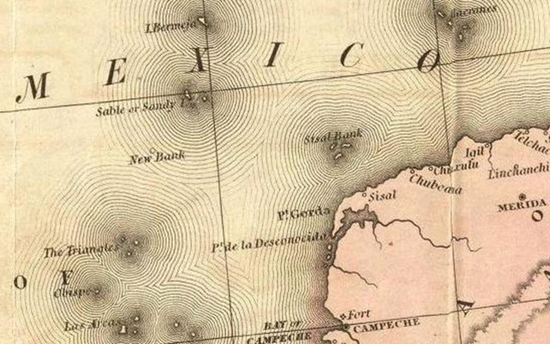

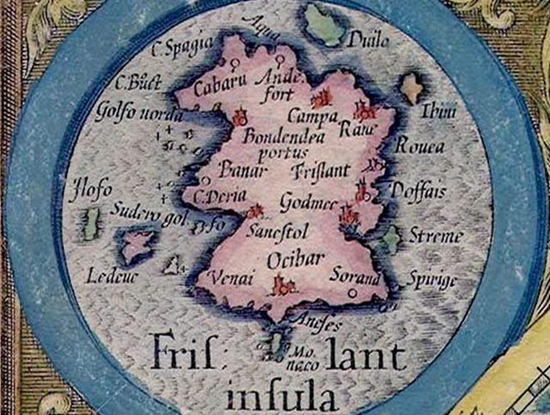
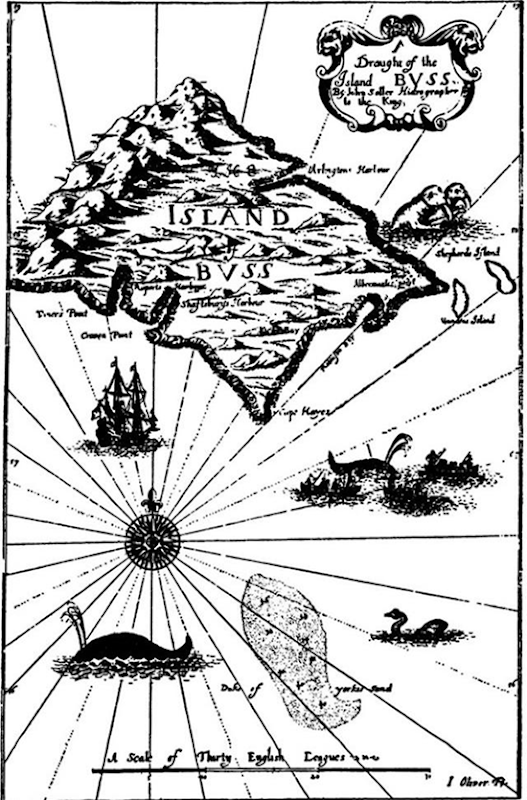


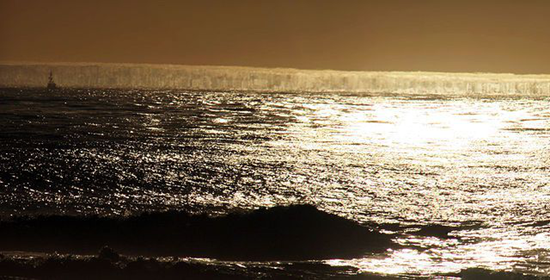
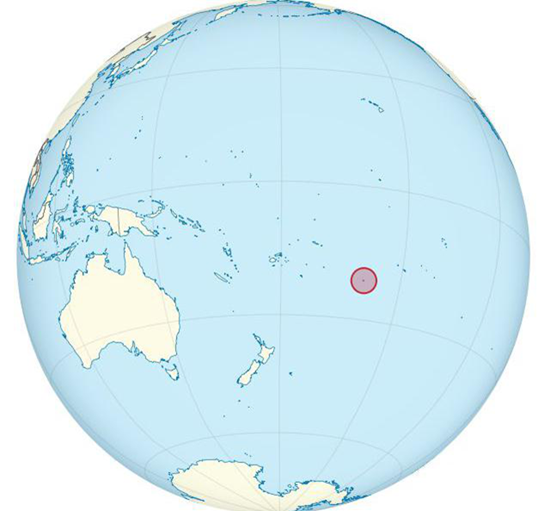


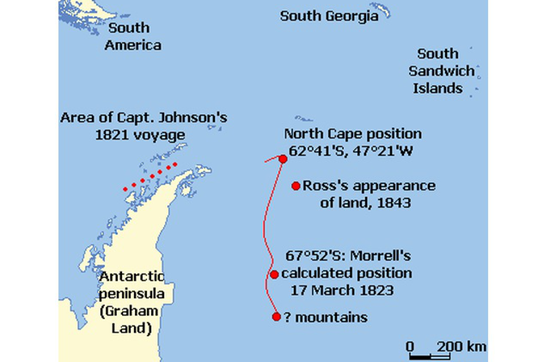


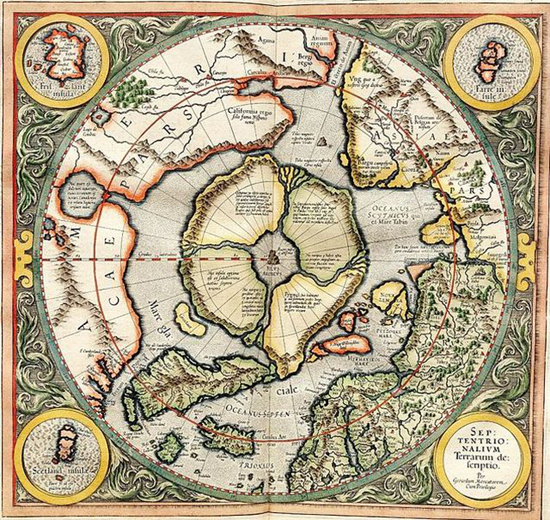
No comments:
Post a Comment
Please adhere to proper blog etiquette when posting your comments. This blog owner will exercise his absolution discretion in allowing or rejecting any comments that are deemed seditious, defamatory, libelous, racist, vulgar, insulting, and other remarks that exhibit similar characteristics. If you insist on using anonymous comments, please write your name or other IDs at the end of your message.